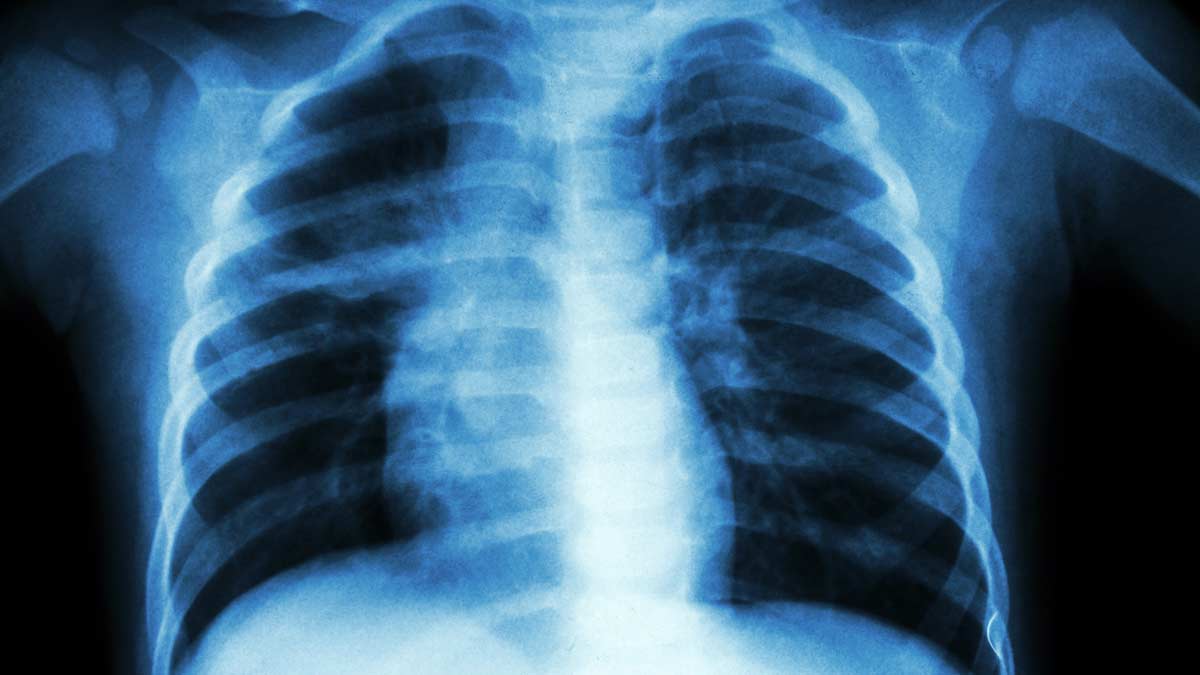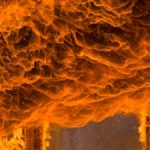Explosion Lung Injury
There are several types of lung injuries that are caused by explosions. These injuries can be life-altering and life-threatening. The inability to breathe properly is one of the most distressing medical conditions.

In an explosion, there can be near instantaneous transformation of the explosive material into highly pressurized gas. This releases energy at supersonic speeds. The blast wave travels outwards from the blast’s epicenter. The wave may only last for milliseconds, but it does serious damage to structures and people. This wave creates intense pressure on the body, which can tear the lungs or even make them burst. Explosions in confined spaces can create much more serious injuries, with increased mortality.
Primary Explosion Injury
The initial blast wave can cause ‘blast lung,’ which is the most common fatal primary blast injury. Because the lung tissue is dense, and the blast is very high pressure, serious damage can occur. This damage can include:
- Tearing of the lung tissue
- Hemorrhage, or heavy bleeding from a ruptured blood vessel
- Contusion, or bruising of a region of injured tissue in which blood capillaries have been ruptured
- Edema, or swelling from injury, which happens when blood vessels leak fluid into nearby tissues
Blast Lung is classified as a primary explosion injury, and may be present without obvious external injury to the chest.
The other types of lung injuries are called secondary and tertiary injuries.
Secondary Explosion Injury
Secondary injuries are caused by flying debris. In an explosion, the blast may shatter objects into small pieces and propel them around the area at high speed. These metal shrapnel, broken glass, or wood fragments can cause serious injuries.
The debris can penetrate the lungs. This injury requires emergency surgery, or the patient can bleed or suffocate to death. Debris can also cause lacerations in the bronchial tubes, making it difficult to breathe.
Tertiary Explosion Injury
Tertiary injuries, sometimes called Blunt Chest Trauma, are caused by a person being thrown through the air and hitting a hard surface. The lungs can be bruised when a body is slammed against a wall or floor. This trauma can also cause broken ribs that can make it difficult to breathe. These injuries can cause wheezing and low blood pressure.
If the explosion causes a fire, the lungs can be damaged by smoke inhalation. This is called acute inhalation injury, and is also classified as a tertiary injury. But it’s important to remember that tertiary injuries can be just as serious as any other injury. In fact, the most common cause of death in a burn center is respiratory failure, or inability to breathe.
The smoke created by an explosion may be toxic. Especially in a manufacturing facility, the smoke may contain chemicals like formaldehyde, cyanide, sulfur dioxide, acetylene, methane, and benzene. These chemicals can cause chemical burns that lead to severe lung damage. They can also cause aspiration pneumonia, which is an infection in the lungs.
Even if your lungs heal completely after an injury, scar tissue may develop. Scar tissue can make it harder to breathe because it reduces the elasticity in the lungs. Symptoms include
- Shortness of breath
- Coughing
- Fatigue
- Clubbing, which is rounded and swollen fingertips and nails.
Scars on the lungs are permanent. Loss of stamina and shortness of breath can occur months after the explosion, and can last for years.
Blast Lung Injury
The symptoms of a blast lung injury can be delayed hours or one or two days, or they may appear immediately. Symptoms include trouble breathing (dyspnea), chest pain, swelling or edema, blue skin that suggests oxygen deprivation, a collapsed lung (pneumothorax), coughing up blood, low oxygen levels, hemorrhages in the alveolar wall, and accumulation of blood in the pleural cavity, which is the thin fluid-filled space between the visceral and parietal pleura of each lung. These symptoms cannot be seen and usually there is no obvious external injury to the chest.
If the explosion has caused a ruptured eardrum, it’s likely that a patient also has lung damage. Ruptured eardrums indicate the explosion blast was high pressure.
The seriousness of a blast lung injury depends on several conditions. The composition of the materials involved make a difference, as does the surrounding environment. If there are protective barriers, the injuries may be less severe, but some blast waves can wrap around objects and buildings. Environmental hazards can make the situation worse, especially if toxic chemicals leak, burn, or are part of the actual explosion.
What Can You Do Now?
Your lung injury may mean that you can’t return to the job you had before the explosion. You may be completely disabled, and not be able to work at all. Meanwhile, your medical bills pile up, and could extend into the foreseeable future.
Our law firm has experienced explosion attorneys who are ready to help you with your case. When we are hired we immediately start investigating the explosion and try to determine liability and if breach of duty occurred. We will examine the explosion site, examine police and fire reports, and interview witnesses. We will also investigate the company or persons who may be responsible for the explosion and pore over company documents.
We have won millions of dollars for our clients who have been seriously injured, and millions for families of those who have been tragically killed in explosions. We will work hard on your case and do everything we can to make sure that your legal rights are protected.
You have enough to worry about, just recovering and trying to piece your life back together. Let us help you through the myriad complex of red tape, forms to fill out, and insurance requirements. Call us at 1-888-377-8900 (toll-free). This call is free, confidential, and without obligation. We do not receive any money until we win compensation for you. We want to make sure that you don’t have to worry about paying medical bills for your injuries. You can also fill out our online contact form. Someone from our law firm will get back to you shortly.
Sources
- Sasser, SM, et. al. “Blast Lung Injury.” Prehosp. Emerg. Care, 10, 2, 2006, 165-72.
- “Explosions and Blast Injuries.” CDC. Web. 19 Apr. 2018.



Leave a Reply
Want to join the discussion?Feel free to contribute!